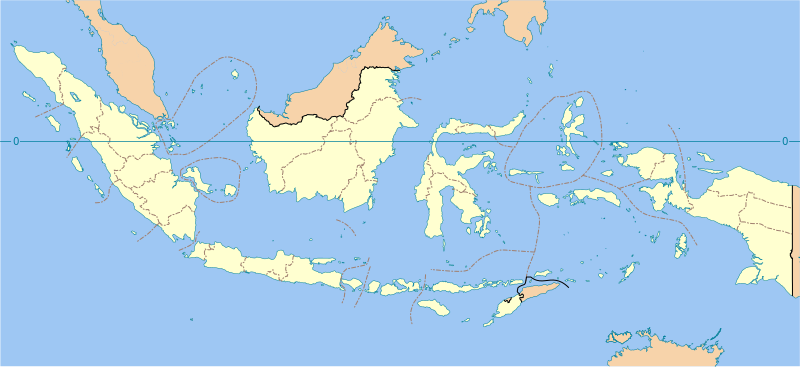
I am mostly interested in the fourth larger island of the entire archipelago there, Sulawesi (mostly known by the Portuguese name of Celebes).
Sulawesi (i read) means "iron island", and was called that due to the iron which was exported from one of its regions.
The island seems to have had an interesting pre-archaic culture, which produced statues of bloated-forms, such as the following quite interesting megalith:

wiki said:In Central Sulawesi there are over 400 granite megaliths, which various archaeological studies have dated to be from 3000 BC to 1300 AD. They vary in size from a few centimetres to ca.4.5 metres (15 ft). The original purpose of the megaliths is unknown. About 30 of the megaliths represent human forms. Other megaliths are in form of large pots (Kalamba) and stone plates (Tutu'na)
The country was later on a colony of the Netherlands, and became independent some years after the end of ww2, as a direct result of that conflict. It is the most populated of the (majority) muslim nations, having around 240 million people. The four larger islands (all of which are among the thirteen largest islands on our planet, while New Guinea is the second largest globally- but not entirely part of the nation of Indonesia) were the main colonial holding of the Netherlands which focused on the spice trade.
I would like to ask if anyone has information on the culture of the Celebes island and its development up to historic times. The Elephant of the Celebes is another focal point of my interest on this, from a different perspective (expressionist painting).


